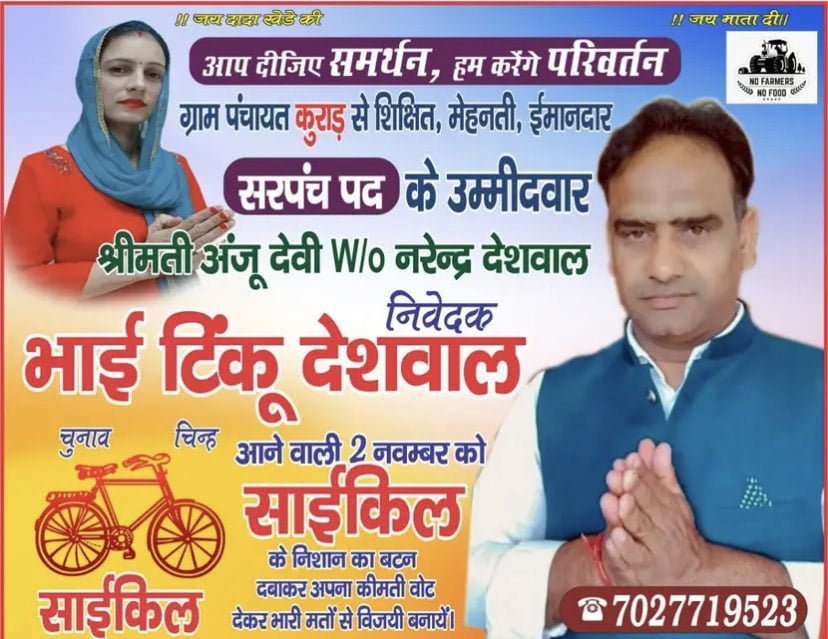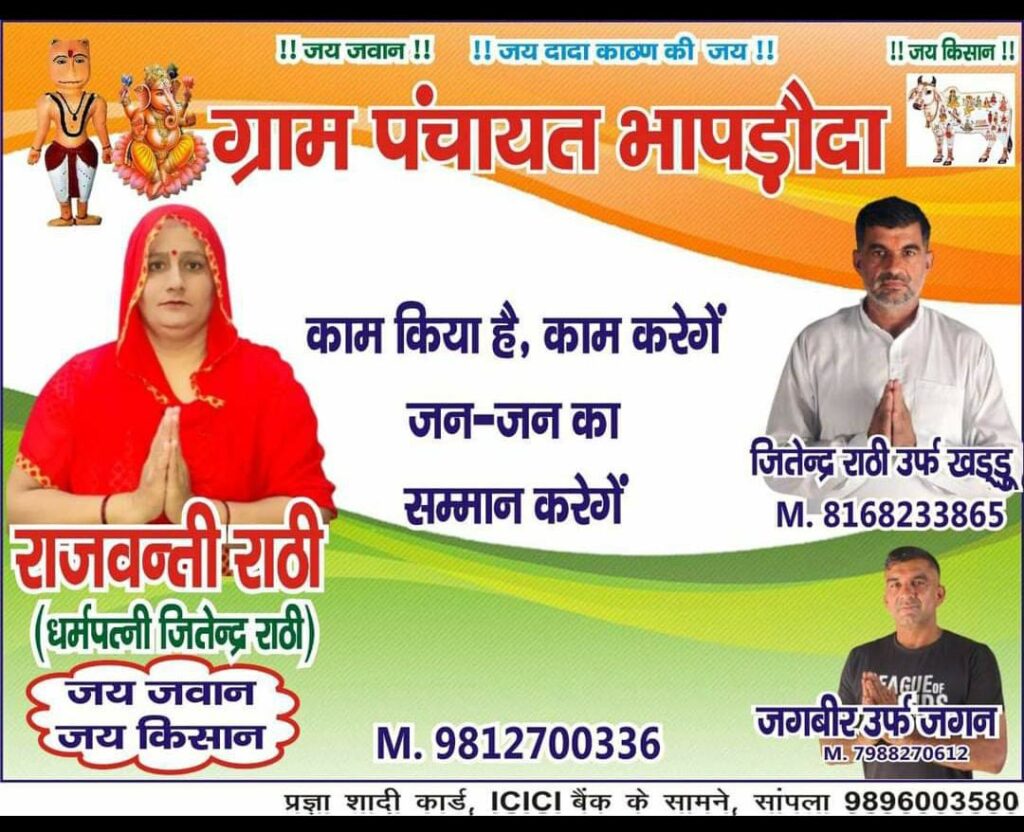The local government bodies such as Gram Panchayat, Panchayat Samiti, Zila Parishad etc.. form an integral part of the four tier system of the central government. These local governance systems make it possible for a direct involvement of the citizens in the administrative affairs of their community and are hence referred to as the backbone of a democratic state.

Since no community comprises people of a single class, caste or gender, a fair representation in the local government bodies becomes very crucial. In order to ensure a fair representation, some seats in the Panchayati Raj Institutions are reserved for scheduled castes, scheduled tribes and women candidates. And some states including Haryana have made provision of 50% reservation for women in PRIs. But with every Panchayat election in Haryana, the effectiveness of this reservation is put into question.
Most of the campaign proceedings are usually done by the male members of the family, in the ongoing elections, some videos have surfaced where reporters from local news channels can be seen interviewing the male relative of the woman candidate who was contesting polls and after “she” won the elections, there’s no mention of the actual Sarpanch anywhere in the interview but the male relative is being addressed as the Sarpanch of the village.
With a history of one of the lowest sex ratios in the country, Haryana happens to be one of the most patriarchal states of Northern India where the majority of women are still confined to the boundaries of their households, and handling public affairs is even now considered as something way out of their leagues. In a scenario like this, 50% reservation for women in PRIs should act like a game changer for them but disappointingly, the patriarchs manage to find their way around this provision as well.
The recently held Panchayat elections in Haryana which began on 2nd November 2022, have once again brought to the front the veiled face of empowerment, the women sarpanches whose roles are limited to small pictures on the campaign posters and their names and signatures on the official paperwork. The “tradition” of ‘sarpanch patis’ where male relatives (husband/ brother in law/ father in law/ father) handle all the official duties on behalf of the women sarpanches, continues without any hurdle. And the worst part of it all is that there’s nothing about this business that’s hidden, after all, its all about visibility and the patriarchal shows.
Also read: Sarpanch Pati: The Roadblock To Women’s Political Participation
Mostly in every village across the state, a few well known, well off families dominate the local politics and put in every possible effort for the “chaudhar” to stay within the family and the power to remain within their control. In such cases, if a seat falls under the reservation for women category, it is a common practice for such families to find a suitable dummy woman candidate within the family and contest the election in her name.
When the campaigning for the same starts, patriarchy can be seen dripping from every bit of the posters that are circulated around, a typical woman candidate’s poster looks like this- a small picture of the actual (woman) candidate in one corner, a huge picture of her male relative in another, and her name is followed by her husband or father’s name in bold letters, reducing her identity to her relation with her male relative and her role to a mere dummy candidate for the same man and in some cases, the women candidates have altogether been removed from the posters, whereas a male candidate’s poster has no mentions of anyone but him.
The “Sarpanch Pati” culture, robs off the women citizens of a leader who actually represents them, and defies the whole purpose of reservation as most of the women sarpanches end up only as a name in the government’s list of sarpanches and the face of empowerment just stays limited to the paperwork, whereas the ground reality stands in stark contrast with the paperwork reality.
Most of the campaign proceedings are usually done by the male members of the family, in the ongoing elections, some videos have surfaced where reporters from local news channels can be seen interviewing the male relative of the woman candidate who was contesting polls and after “she” won the elections, there’s no mention of the actual Sarpanch anywhere in the interview but the male relative is being addressed as the Sarpanch of the village.

Another crucial point to be noticed about the “Sarpanchi” elections before the reservation was increased to 50% was that, if a seat fell under the unreserved category, then only in rarest of the rare cases would one see an actual woman candidate contesting elections on that seat because of the popular opinion that “chaudhar” is for men. Therefore, an increased reservation should ensure an increased participation of women in local politics but so far this participation looks pretty limited to the papers. Though in the recent times, some women sarpanches have gone on to assert their authority and have actually made improvements in their area in every field but the problem still lingers, because such cases are only a few.
Also read: UP Elections: Congress Candidate Manju Sant On The Challenges She Faced As A SC Woman In Politics
The “Sarpanch Pati” culture, robs off the women citizens of a leader who actually represents them, and defies the whole purpose of reservation as most of the women sarpanches end up only as a name in the government’s list of sarpanches and the face of empowerment just stays limited to the paperwork, whereas the ground reality stands in stark contrast with the paperwork reality.




